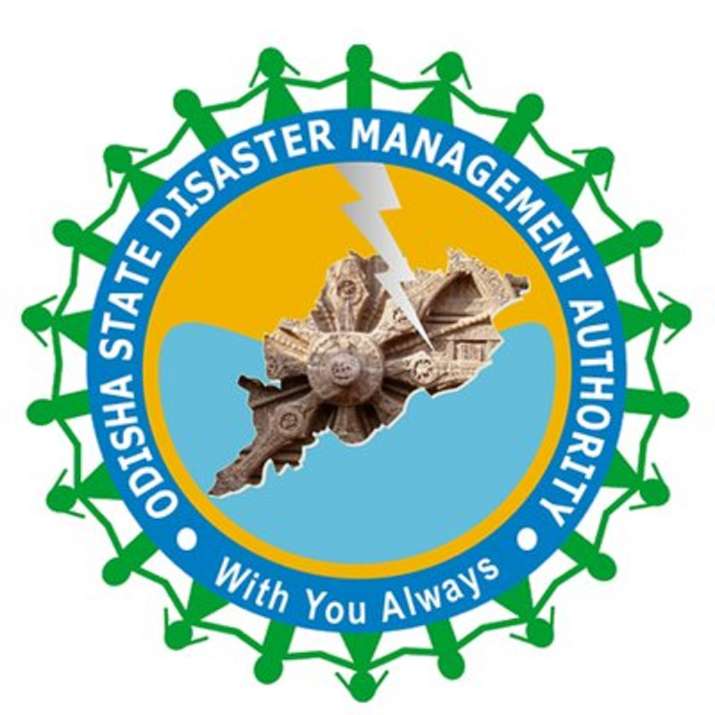
Over the last 25 years, the world has seen a rise in the
frequency of natural disasters. Today, there are more people at risk from
natural hazards than ever before, with those in developing countries
particularly at risk. Odisha is the 11th most populated state in India, has 30
districts of which 13 are coastal. The coastal districts are highly prone to
cyclones, floods, and heat waves due to geographic location. Its coastline
adjoins the Bay of Bengal for 300 miles, which makes it 4-5 times more likely
to experience storms than it would if it were located in the Arabian Sea.
Tropical cyclones from the Bay of Bengal bring severe and widespread
destruction.
On 29th October 1999, Odisha was hit by a cyclone affecting
all coastal districts. The Indian Meteorological Department called it a ‘super
cyclone’ due to its high wind velocity, storm surge, torrential rainfall which
caused devastating floods in the major river basins. The intensity of the
cyclone killed more than 10,000 people, caused severe economic devastation and
activated the Odisha Relief Code (the then sole disaster policy document for
the state). 3.5 lakh houses were destroyed, several villages were completely
washed away, two lakh animals were killed and 25 lakh people were marooned.
It
was a day of fatal miscalculations, a day when death and its nauseating stench
was everywhere. A day when all hell broke loose and nobody knew what to do. All
rested on hope. But that day, even hope died. The government officials had
underestimated the super cyclone's intensity and had miscalculated its path.
There were not enough cyclone shelters to protect Odisha's tens of thousands of
people. The government machinery was mired in chaos and confusion. The result?
A death toll so high that thousands of bodies had to be "bulldozed into
vast, faceless graves". It ranks among the worst natural disasters in
India.
Exactly Fourteen years after the super cyclone, on October 12, 2013, Odisha was hit by another major Cyclone Phailin, that caused extensive floods in the major river basins. According to the National Institute of Disaster Management only 45 people were reported killed.
Six years later, Cyclone Fani barrelled through Odisha on 3rd
May 2019, unleashing copious rain and windstorms, blowing away thatched houses and
swamping towns and villages. The extremely severe cyclonic storm 'Fani' or the `Hood
of Snake' left a trail of devastation in large parts of coastal Odisha, with
the seaside pilgrim town of Puri being the worst hit. But, the death toll in
the wake of this devastation was just 8!
So, what happened? How could Odisha bring down the death
toll so significantly? The high death toll in 1999 was due to lack of
coordination, communication, and complacent world-views that existed in the
disaster management system. Whereas, effective strategy of disaster preparation
and quick responding has made Odisha India’s most disaster-ready state today.
Here
are some of the strategies applied:
1.Build
a relief infrastructure: In the years after the devastating cyclone, Odisha
began building cyclone shelters on a war footing. In 1999 Odisha had 21
shelters. Today, before Cyclone Fani struck, the state had readied nearly 900
cyclone shelters.
2.Accuracy
of early warning systems: Prior to 1999 there was no coordination between
the government departments. The technology was underdeveloped & relied on
New Delhi and Kolkata for weather forecasts over telephone. There was delay in
receiving weather warnings. In the aftermath of the super cyclone, the capacity
of the Indian Meteorological Department was enhanced by space technology, the
Meteo France International synergy system and a high-power computing system in
order to help with predictions. Fani was accurately predicted days before
allowing the machinery to gear up before it struck.
3.Clear
communication plan: Information and communication tools such as media,
mobile text messaging, hotlines and VSat were fully exploited to disseminate
the core information to the at-risk population. Plan for involvement &
clear communication from proactive political leadership before, during, and
after a disaster was developed. A disaster response system aligned to saving
lives was emphasised. Political leadership promoted a culture of disaster
preparedness by fixing October 29 as Disaster Preparedness Day for Odisha.
4.Effective
coordination of groups: In 1994 in Yokohama, Japan the international
community began to grasp the deleterious effect of disasters on the developing
world. The first Disaster Management Act, created a knowledge network that
included the Indian Meteorological Department, Earth System Science
Observation, the Indian Space Research Organisation, Central Water Commission,
Geological Survey of India, and National Remote Sensing Centre. The generation
of accurate core information prior to Phailin’s landfall was instrumental in
developing an effective response system. It helped guide primary responders’
actions. As a result, responders were able to evacuate 1.2 million people from
18 districts. This is one of the largest emergency operations ever undertaken
in India. Odisha also set up the first disaster management organization in
India.
In life, there are sometimes events or episodes that bring
about a complete transformation in a person's character. For Odisha, the 1999 Super
Cyclone was one such event. In Odisha, 60 per cent of the population lives
below the poverty line and 53 per cent is malnourished. The female literacy
rate is 35% and school dropout rate for girls is high. Only 49 per cent of the
population has access to safe drinking water. Their average income is $5 per
day. These figures make it clear that in the eventuality of a disaster, the
poor, uneducated & weak are hit the most. Such has been Odisha's transformation
& success in managing disasters effectively that the United Nations lauded
the state for its management of Cyclones, calling it a "landmark success
story".
Benjamin Franklin said “By
failing to prepare, you are preparing to fail”.
Odisha’s ability to put such an
effective disaster management plan in place and save thousands of lives is a
template that the world can learn from.